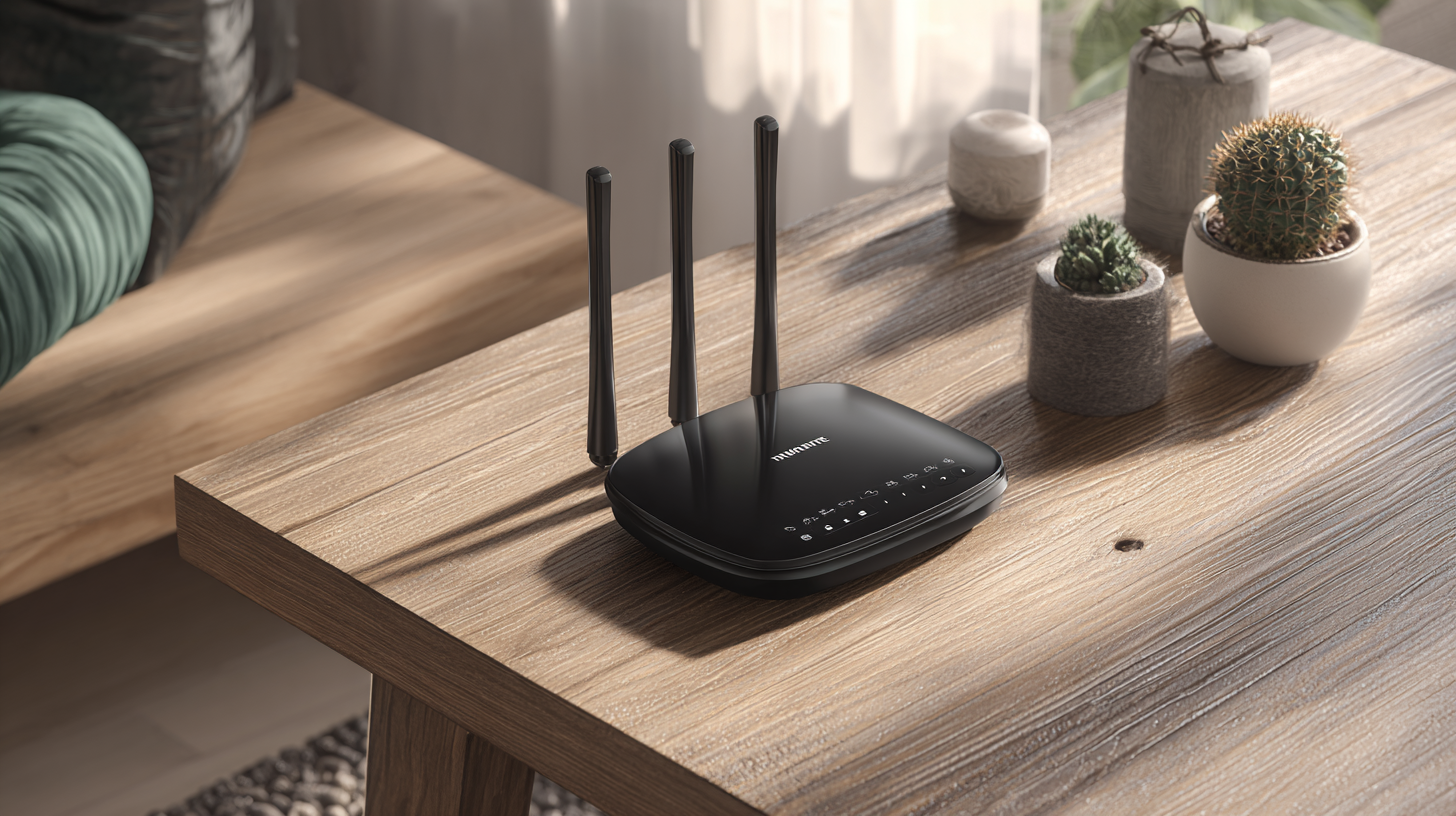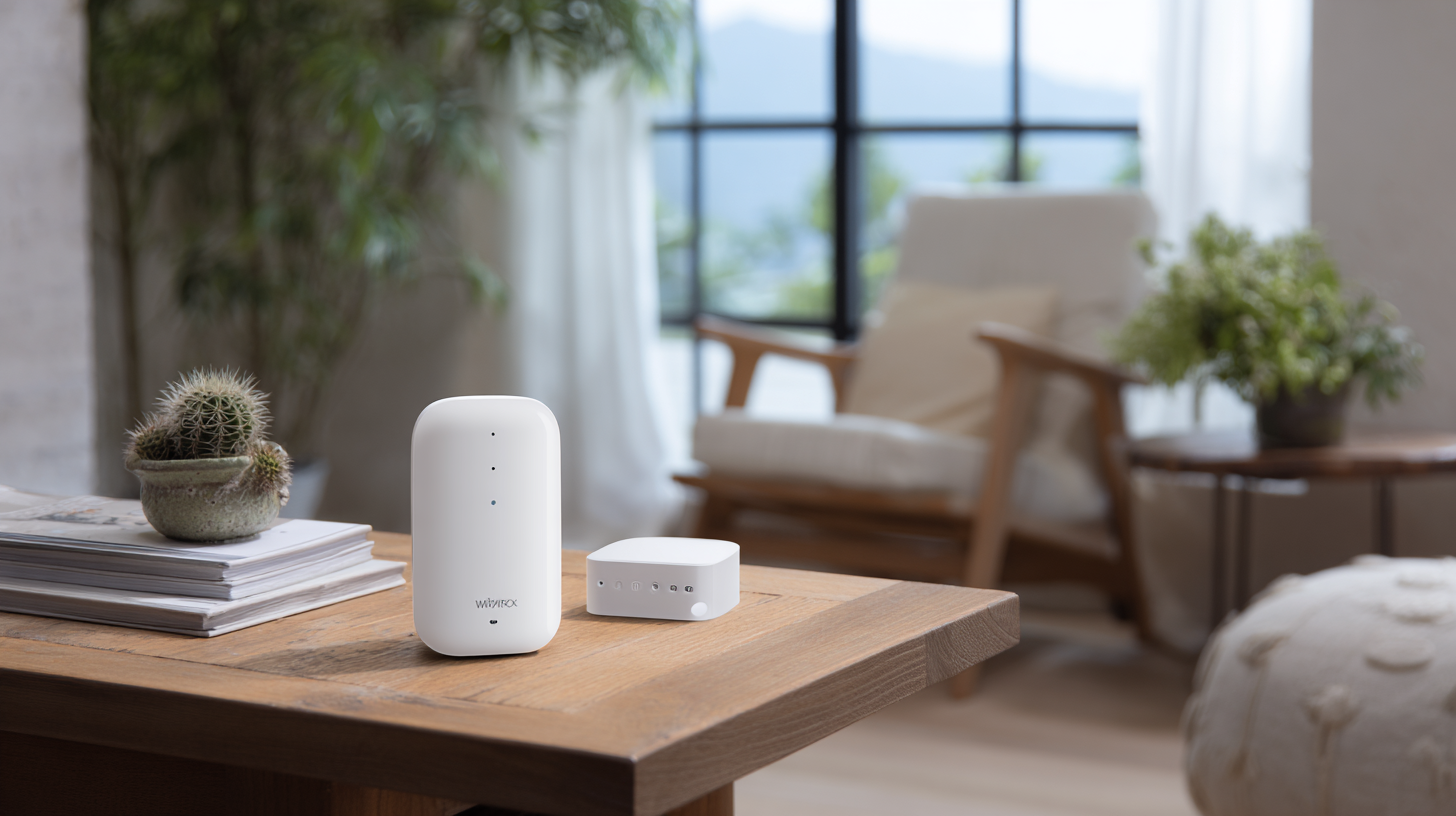In today's digital age, reliable and expansive Wi-Fi coverage is paramount for both personal and professional environments. A report by Cisco predicts that by 2023, there will be over 29 billion networked devices globally, emphasizing the necessity for robust connectivity solutions.

However, many households and businesses face the challenge of Wi-Fi dead zones due to the limitations of standard routers. This is where a Router Extender plays a crucial role, as it amplifies the signal and expands coverage, ensuring seamless connectivity in every corner of the space.
Studies indicate that utilizing a Router Extender can improve Wi-Fi range by up to 50%, making it an essential tool for maximizing network reach and reliability. In this comprehensive guide, we will explore the best Router Extenders available on the market, their applications across various industries, and how they can enhance both productivity and enjoyment for users.
In today's digital age, having reliable Wi-Fi coverage is crucial for both modern homes and offices. As more people work from home and rely on various devices for entertainment, communication, and productivity, a stable internet connection has become a necessity. Weak signals can lead to frustrating interruptions, affecting everything from streaming your favorite show to conducting video conferences.
To ensure comprehensive coverage, consider strategically placing your router in a central location, away from thick walls and electronic devices that could cause interference. Additionally, using a Wi-Fi extender can significantly enhance signal strength, expanding coverage to areas of your home or office that typically suffer from weak connectivity.
Regularly updating your router's firmware is another vital tip. Manufacturers often release updates that enhance performance and security features. Taking a few moments to check for updates can help maintain a robust and secure network, providing you with the seamless internet experience you need for work and leisure.
This bar chart illustrates the Wi-Fi signal strength measured in decibels (dBm) for various rooms in a typical modern home. The closer the value is to 0, the stronger the signal. Optimal Wi-Fi coverage is essential for effective connectivity in both homes and offices.
When selecting a high-quality router extender, there are several key features to consider that can significantly enhance your Wi-Fi coverage. First and foremost, look for extenders that support the latest Wi-Fi standards, such as 802.11ac or 802.11ax (Wi-Fi 6). These standards not only provide faster speeds but also improve the overall efficiency of the network, enabling multiple devices to connect without a significant drop in performance.

Another critical feature to pay attention to is the extender's coverage area. Many extenders come with specific range specifications, so choosing one that matches your home size is essential. Additionally, features like dual-band support will allow you to connect on both the 2.4 GHz and 5 GHz bands, maximizing speed and reducing congestion. If you have smart home devices or multiple users streaming simultaneously, a mesh network capability can be a game-changer, as it creates a seamless Wi-Fi experience throughout your space.
Always prioritize models with user-friendly setup processes and robust security protocols to ensure a safe and hassle-free connection.
When it comes to enhancing your Wi-Fi coverage in 2023, selecting the right router extender is crucial. With the increasing number of smart devices and demands on our home networks, it's essential to invest in a reliable extender that can maximize performance. The five top-rated router extenders this year have been carefully selected based on their ability to eliminate dead zones, improve connection speeds, and enhance overall network stability.
Among the leading options, the Netgear Nighthawk X6S stands out for its tri-band technology, which delivers a seamless connection even in crowded environments. Another commendable option is the TP-Link RE650, known for its powerful dual-band support and large coverage area. For those seeking a budget-friendly choice without sacrificing performance, the D-Link DAP-1610 offers exceptional value. Additional contenders like the Linksys RE7000 and the ASUS RP-AC1900 also impress with their robust features and easy setup processes. Each of these extenders demonstrates the transformative impact they can have on home networking, ensuring a smooth and uninterrupted online experience.
When choosing the best router extender, it's crucial to compare technical specifications to ensure you pick the right model for your needs. Key factors to consider include the extender's range, speed capabilities, and compatibility with your existing router. Look for models that support the latest Wi-Fi standards, as these will provide faster data transmission and better performance, especially in large households or environments with multiple devices connected.
Another important aspect is the number of bands the extender supports. Dual-band or tri-band options can significantly enhance your network’s efficiency by allowing more devices to connect without experiencing delays. Additionally, consider the ease of setup and management features, such as mobile app support or web-based interfaces, which can make configuring your network much simpler. By carefully evaluating these technical specifications, you can select a router extender that not only enhances your Wi-Fi coverage but also accommodates your specific usage requirements, ensuring you get the most out of your internet connection.
When enhancing Wi-Fi coverage, proper installation and setup of a router extender are crucial for achieving optimal performance. According to the latest industry data from the Cisco Annual Internet Report, global internet traffic is expected to reach 396 exabytes per month by 2022, meaning more connections and devices than ever require strong and reliable Wi-Fi. Misconfigured extenders can lead to signal interference and reduced speeds, undermining the benefits of your upgraded network.
To maximize Wi-Fi expansion, start by placing your extender in an optimal location—ideally halfway between your router and the area with weak signal. A study by the Wi-Fi Alliance indicates that up to 30% of users don’t understand the importance of positioning for effective coverage. After installation, ensure that your extended network is using the same SSID as your main network for seamless transitions between signals.
Regular firmware updates are also essential for maintaining security and performance, as reported by the Australian Communications and Media Authority, stating that 73% of users do not keep their devices updated, thereby exposing themselves to vulnerabilities. Following these tips can significantly enhance your home’s Wi-Fi experience.



